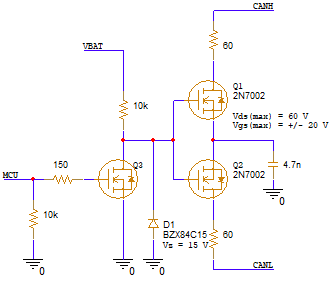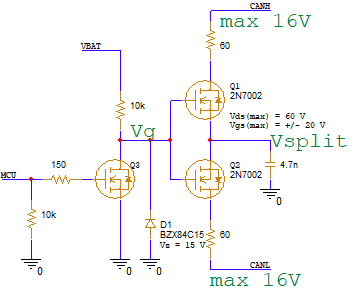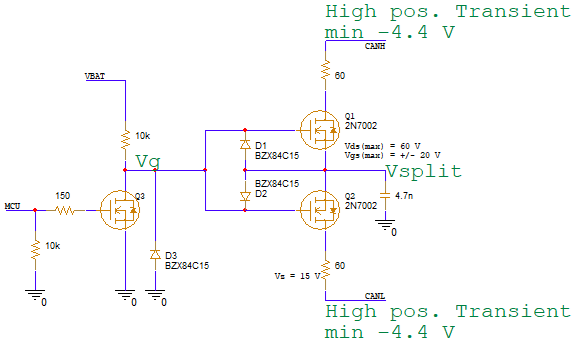Tool/software:
Hello,
Is it possible to add a Common-Mode filter capacitor in combination of selectable resistors? For example, as in the following circuit.
However, to protect against a short to the battery in automotive applications, the Vgs of the MOSFETs in series with the termination resistors should be ±20 V. In addition, the drive level should be low, but this combination of requirements is not met with standard MOSFETs. Is there any other method to add this capacitor?




